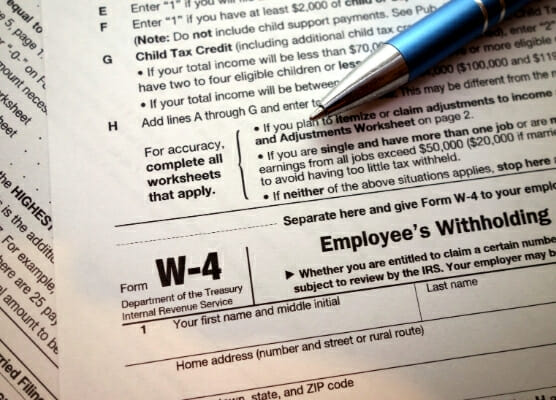Fasten your seatbelts: The IRS is changing withholding for 2021

The two withholding systems the IRS ushered in this year—one based on employees who file post-2019 W-4s and the other based on employees who’ve filed pre-2020 W-4s—are out; an employer-optional bridge is in, starting with 2021 withholding, according to final regulations.
If you choose not to use the bridge, the IRS says it will continue to publish withholding tables and procedures for employees who have pre-2020 forms on file with you.
These regulations won’t become effective until published in the Federal Register, the date of which is still up in the air. You may apply the regulations retroactive to April 1, 2020.
Bridge for old W-4s
Employers were rankled this year by the contortions required to compute withholding for employees who didn’t file the 2020 W-4 and for those who did. Pub. 15-T, Worksheet 1 requires separate entries in these data fields:
- Lines 1d through 1i, for employees who filed the 2020 form or a later year’s form
- Lines 1j through 1l, for those who filed pre-2020 forms.
The final regs seek to unify withholding for these disparate groups of employees through the use of a computational bridge, starting with withholding in 2021. The bridge is optional for employers and details will be included in the 2021 Pub. 15-T.
Advantage: You can use the same data fields in Worksheet 1 for all employees.
Key: To facilitate the computational bridge, the IRS will no longer adjust the value of one withholding allowance; it will permanently set at $4,300.
Wait and see: It seems as if the $4,300 permanent withholding allowance amount is limited to the computational bridge, but it’s not clear.
To use the bridge, you fill out 2021 W-4s for employees who have pre-2020 W-4s on file with you:
- Adjust employees’ filing status in Part 1: You treat an employee as having made an entry on Line 1(c) of the W-4 that most accurately reflects the employee’s entry on Line 3 of a 2019 or earlier Form W-4.
Example. Carl’s 2018 W-4 indicates he’s married, but wants his employer to withhold at the higher single rate. Bridge step required: Carl’s employer adjusts his filing status to single or married filing separately.
- Fill in Step 4(a) for employees based on the marital status on Line 3 of the earlier W-4: For employees whose filing status is single, enter $8,600 (i.e., the value of two withholding allowances); for employees whose filing status is married filing jointly, enter $12,900 (i.e., the value of three withholding allowances).
The rationale: Completing this step helps offset the full basic standard deduction that’s incorporated into the percentage method withholding tables.
- Fill in Step 4(b): Multiply the number of allowances claimed on Line 5 of a 2019 or earlier Form W-4 by $4,300.
The rationale: This replicates the effect of allowances claimed on Line 5 of a 2019 or earlier W-4.
- Fill in Step 4(c): Complete this step only if employees had indicated to you on Line 6 of their old forms they want more taxes withheld from their pay.
Accounting for estimated taxes
Employees with more nonwage income, relative to wage income—perhaps they receive large distributions from S corps or income from exercising stock options—may take their estimated tax payments into account, including estimated tax payments not yet made, when completing their W-4s, provided the following three conditions are met:
- They account for all wage and nonwage income in determining their withholding
- They use the IRS’ withholding estimator
- They don’t use planned estimated tax payments to reduce withholding from wages below the pro rata share of income tax attributable to the estimated annual wages.
What stays the same
The final regs follow the proposed regs regarding:
- When employees must refile their W-4s
- What to do if an employee gives you an invalid form
- How to withhold if an employee doesn’t refile a W-4 to continue their exemption from withholding.



